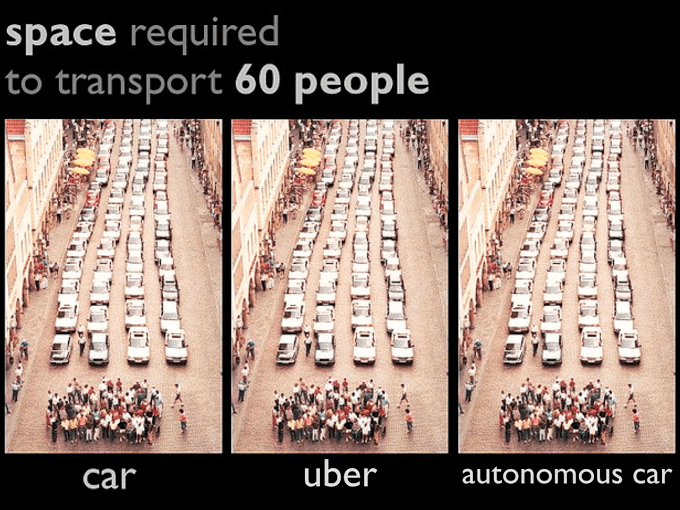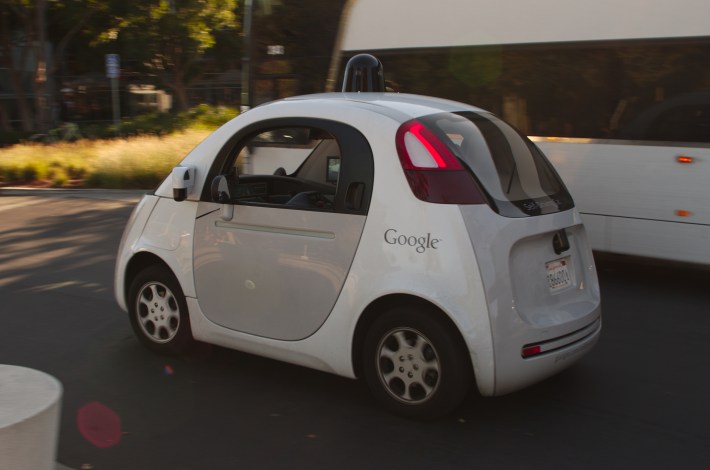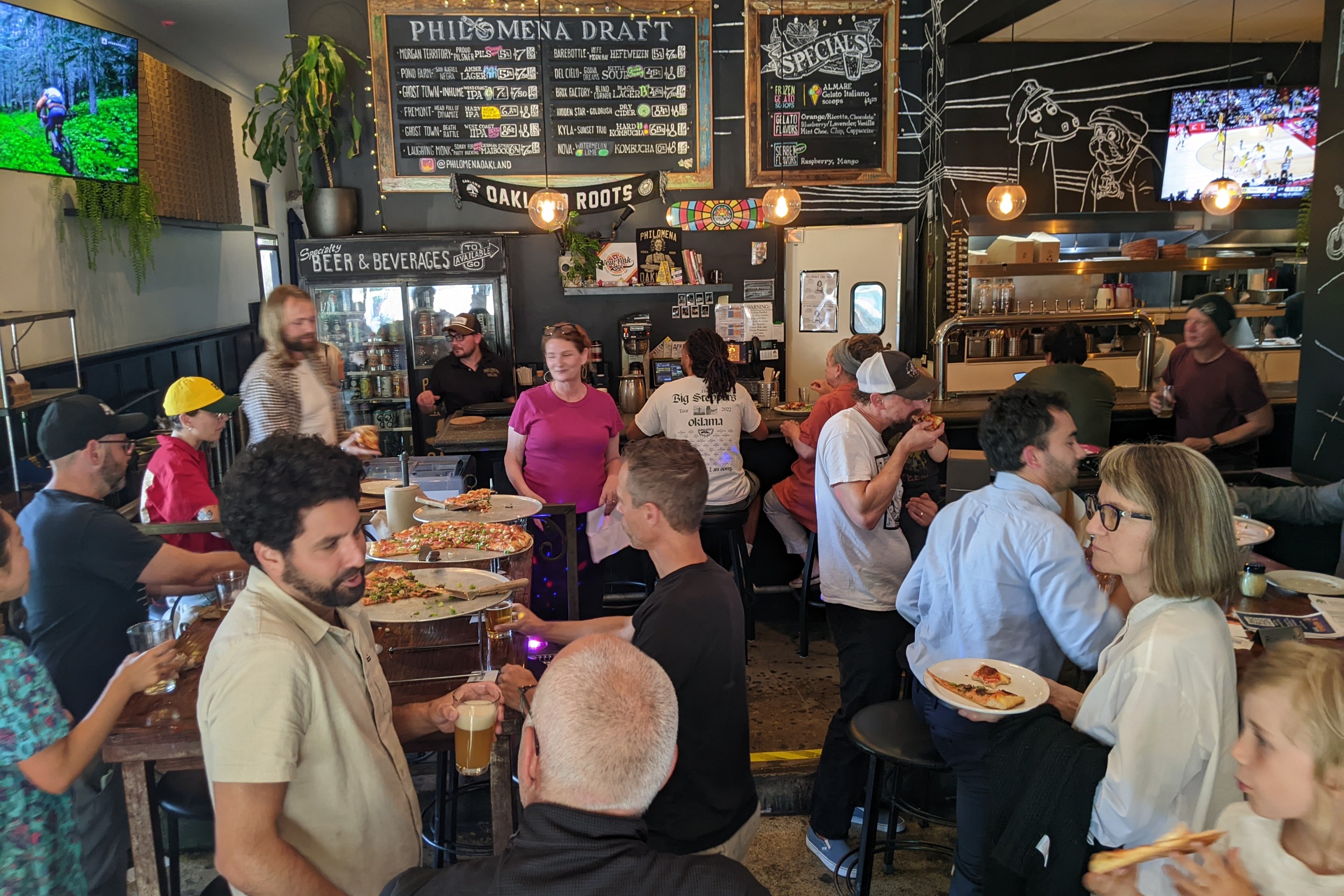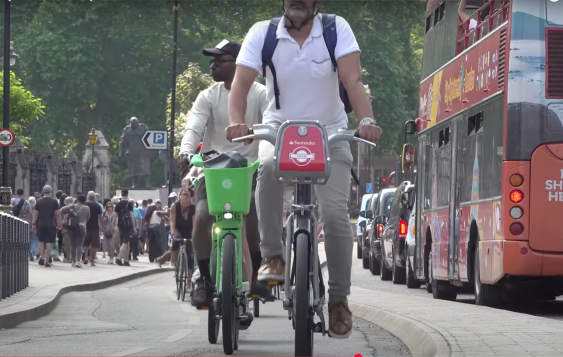
Over the past year driverless cars have been promoted as a panacea for livable cities. The storyline is that driverless cars will help reduce car ownership, free-up urban space for walking and biking, and help reduce death and injury. The USDOT has joined the parade with its “smart city challenge,” awarding Columbus, Ohio a $40 million prize to implement a demonstration project that includes incorporating driverless cars.
San Francisco was among the finalists for this award, but it might be a good thing that the city fell short. San Francisco’s political establishment – the mayor, Board of Supervisors, and its proxies at the SFMTA and Planning Department – frequently talk up their sustainable transportation ambitions, but by and large, when it comes to decisions about San Francisco streets, they pander to motorists. With driverless cars and other “connected” vehicles, the pandering may intensify. We’ll see more, not fewer cars.
Here’s why.

At the core, the politics of cars won’t change. Mass motorization will remain in the sprawl surrounding American cities, including the Bay Area. Cars, no matter how propelled, will still be atomistic, privatized, individualistic forms of mobility that undermine arrangements based on cooperation. Driving a car under unfettered conditions will continue to be a form of mobility that usurps public space and crowds out modes of transportation that are more egalitarian, such as public transit, and superior for decarbonizing transport, such as bicycling.
Private tech interests will clamor for more lanes for their cars, just like conventional car companies do now. You can bet Uber, Google, and other tech titans will pressure cities to cede space. The progressive, equitable, and clean modes--bicycles and transit--will get short shrift.
Then there’s the “rebound effect” whereby people find that using a driverless car is so easy they don’t mind longer trips or congestion. One scenario suggests households that currently have two or more cars might shift to a single shared car, but that car would actually drive more as it shuttles (often empty) back and forth chauffeuring the household members throughout the day. A single vehicle is driven 75 percent more than previously, while children, the disabled, and elderly would summon evermore driving miles.
There is an extreme climate emergency; time is running out in what Naomi Klein refers to as “decade zero.” Overemphasizing technological fixes like driverless cars is just another form of climate denial. It enables people to put off lifestyle changes and lulls people into inaction while waiting for a miracle. People who once saw merit in transit or bikes might now hope for a driverless-car solution, making it harder to enact municipal-scale bike systems or transit.
Think about it. The USDOT is paralyzed because of Congress, High-Speed Rail is floundering, we have no national bicycle policy, and transit is underfunded, and yet a “smart city challenge” is putting driverless cars on a fast-track. San Francisco created a special office of innovation at the SFMTA, while bicycle projects languish and Muni is hobbled by backlashes over creating transit space.
If big tech and its political allies really want to help make our cities more livable and reduce greenhouse gases, here’s a modest proposal. Instead of focusing on making it easier to drive, focus on making it harder. We can start by installing governing devices into all cars--driverless or not. As cars exit freeways, governing devices make cars travel at 18 mph, speeds that are safe for the human scale. Then we can get back to the real solutions to our global crisis--bikes, buses, and a cultural shift encouraging slowing down, less consumption, and less driving.
Jason Henderson is a Professor in Geography & Environment at SF State and author of Street Fight: The Politics of Mobility in San Francisco and co-author of Low Car(Bon) Communities: Inspiring Car-Free and Car-Lite Urban Futures





